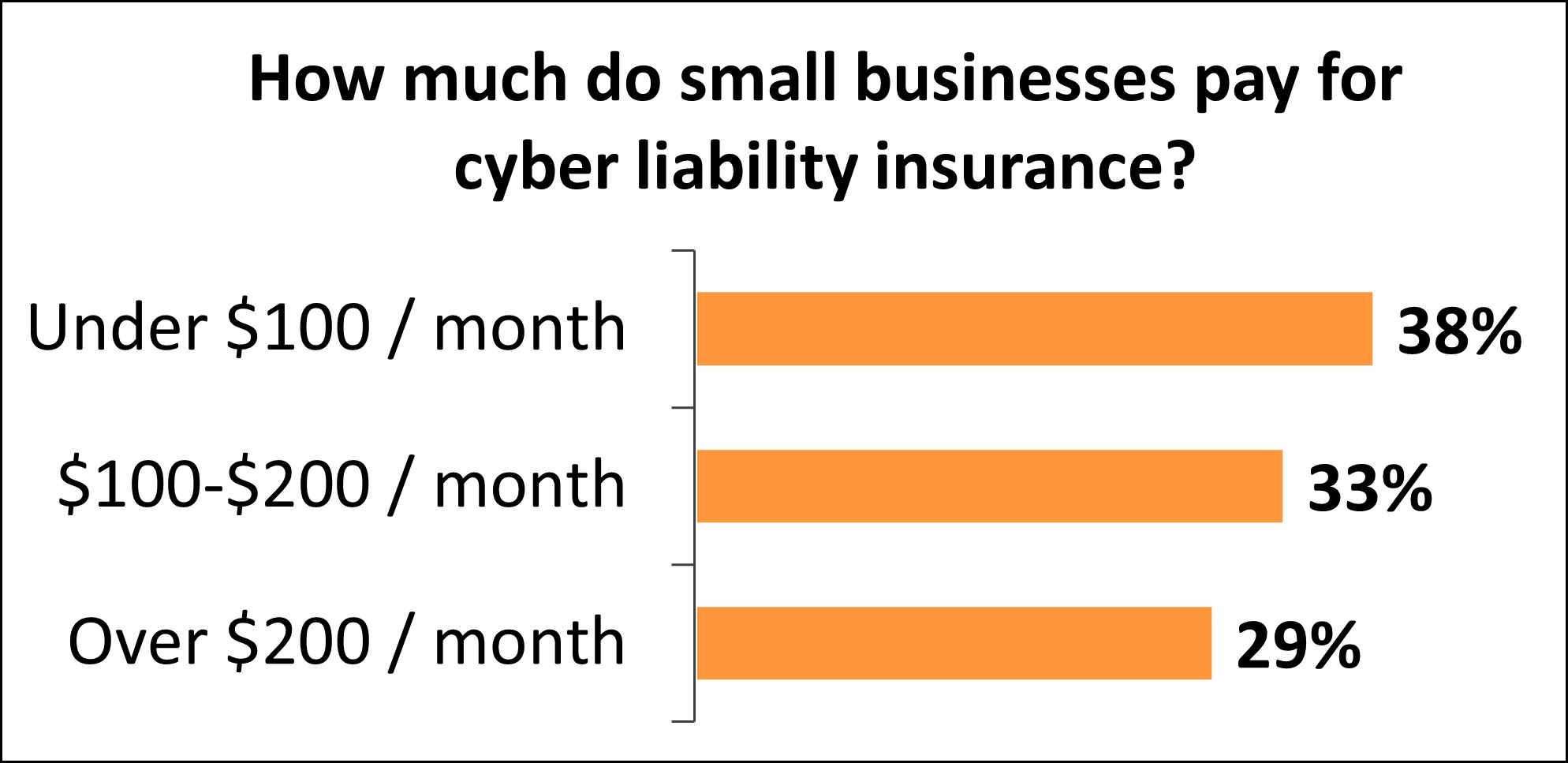Home>Finance>How Much Does It Cost To Create A Cryptocurrency


Finance
How Much Does It Cost To Create A Cryptocurrency
Published: October 5, 2023
Find out the cost involved in creating a cryptocurrency, its features, and potential returns. Explore the finance aspect of launching your own digital currency.
(Many of the links in this article redirect to a specific reviewed product. Your purchase of these products through affiliate links helps to generate commission for LiveWell, at no extra cost. Learn more)
Table of Contents
Introduction
As the world becomes increasingly digital and interconnected, cryptocurrencies have emerged as a popular alternative to traditional forms of currency. With the rise of Bitcoin and Ethereum, more individuals and businesses are exploring the idea of creating their own cryptocurrency. However, one question that often arises is how much does it cost to create a cryptocurrency?
The cost of creating a cryptocurrency can vary greatly depending on several factors. This article will dive into the various elements that influence the overall cost and provide insights into the process of creating a cryptocurrency.
Creating a cryptocurrency involves a range of tasks, including research, planning, development, coding, blockchain integration, security measures, legal compliance, and marketing. Each of these components contributes to the overall cost and complexity of the project.
Before delving into the specific costs involved, it’s essential to note that creating a cryptocurrency requires a deep understanding of blockchain technology, cryptography, and programming. Therefore, it’s advisable to work with a team of experts who specialize in cryptocurrency development to ensure a successful and secure implementation.
Now, let’s explore the factors that influence the cost of creating a cryptocurrency.
Factors influencing the cost of creating a cryptocurrency
Creating a cryptocurrency involves a multitude of factors that contribute to the overall cost. Understanding these factors will help you estimate the expenses and make informed decisions. Here are the key factors influencing the cost of creating a cryptocurrency:
- Scope and complexity: The scope and complexity of your cryptocurrency project will significantly impact the cost. Determine the features and functionalities you want to incorporate, such as smart contracts, decentralized applications (DApps), or privacy protocols. The more intricate and advanced the features, the higher the development cost.
- Blockchain platform: Choosing the right blockchain platform is crucial as it impacts development time and cost. Bitcoin’s blockchain is the most well-known, but other platforms like Ethereum, Binance Smart Chain, and EOS offer additional features. Each platform has its own development requirements and associated costs.
- Development team: Hiring an experienced development team is essential for creating a high-quality cryptocurrency. The cost will vary depending on the team’s expertise, reputation, and geographic location. It’s advisable to work with a team that specializes in blockchain development and has a proven track record.
- Design and user interface: The design and user interface of your cryptocurrency play a crucial role in attracting users. A visually appealing and intuitive interface can enhance user experience and build trust. Investing in professional design services will contribute to the overall cost.
- Security measures: Ensuring the security of your cryptocurrency and its associated transactions is of utmost importance. Implementing robust security measures, such as encryption, multi-factor authentication, and secure wallet solutions, will require additional investment but is essential for protecting user funds and maintaining trust.
- Legal and regulatory compliance: Complying with legal and regulatory requirements is crucial to avoid legal issues and penalties. Engaging legal experts to navigate the complex landscape of cryptocurrency regulations is recommended. Costs associated with legal counsel and compliance efforts should be factored into your budget.
- Smart contracts and tokenization: If you plan to incorporate smart contracts and create a tokenized ecosystem, additional development and auditing costs should be considered. Smart contracts enable automated execution of predefined actions and require careful code development and thorough testing.
- Integration with exchanges: To ensure liquidity, your cryptocurrency will need to be listed on exchanges. Exchanges often charge listing fees, and the integration process can involve additional expenses. Research and select suitable exchanges based on cost, reputation, and trading volume.
- Marketing and promotion: Successfully launching a cryptocurrency requires effective marketing and promotion. Engaging in branding activities, creating a website, running advertising campaigns, and building a community all contribute to the cost. Allocate a budget for marketing to gain visibility and attract users.
By considering these factors, you can estimate the cost of creating your cryptocurrency and ensure that you allocate a realistic budget for the project. Keep in mind that costs can vary depending on the specific requirements and market conditions.
Research and planning
Before diving into the development process, thorough research and planning are crucial for creating a successful cryptocurrency. This phase sets the foundation for the entire project and helps identify key objectives, target audience, and technical requirements. Here are the key aspects to consider during the research and planning phase:
- Market analysis: Conducting a comprehensive market analysis is essential to understand the current landscape and identify potential opportunities for your cryptocurrency. Analyze existing cryptocurrencies, their features, and user adoption to determine where your project can differentiate itself.
- Target audience: Define your target audience and understand their needs, preferences, and pain points. By identifying the target market, you can tailor your cryptocurrency’s features, branding, and marketing strategy to appeal to your desired user base.
- Competitor analysis: Analyze your competitors to gain insights into their strengths and weaknesses. Study their marketing strategies, user experience, and technical implementations to identify areas where your cryptocurrency can excel.
- Technical requirements: Determine the technical specifications and requirements for your cryptocurrency. Consider factors like the type of consensus algorithm (e.g., Proof of Work or Proof of Stake), scalability, transaction speed, and security measures. This will help you select the appropriate blockchain platform and development framework.
- Tokenomics: Designing the tokenomics of your cryptocurrency is a critical step. Define the total supply, token distribution, inflation mechanism, and any token utility or governance features. Tokenomics plays a vital role in attracting investors and creating a sustainable ecosystem around your cryptocurrency.
- Project timeline: Develop a realistic timeline for your cryptocurrency project. Consider the research, development, testing, and launch phases. Breaking down the project into milestones and setting achievable deadlines will help you manage the development process effectively.
- Budget planning: Based on your research and technical requirements, create a budget for the development and marketing of your cryptocurrency. Allocate resources for hiring a development team, legal consultations, marketing efforts, and ongoing maintenance.
Research and planning are crucial to ensure that your cryptocurrency project is well-aligned with the market, target audience, and technical requirements. It sets the stage for successful development and implementation while minimizing potential setbacks along the way.
Take the time to gather insights, analyze the market, and define a clear roadmap to maximize the chances of creating a cryptocurrency that stands out and captures the interest of users and investors.
Development and coding
The development and coding phase is where the actual creation of your cryptocurrency takes place. It involves building the underlying infrastructure, implementing the required features, and coding the smart contracts if necessary. Here are the key aspects to consider during the development and coding phase:
- Blockchain platform: Select the appropriate blockchain platform that aligns with your technical requirements. If you choose Ethereum, for example, you’ll need to write smart contracts in Solidity. Familiarize yourself with the programming languages and tools associated with the chosen platform.
- Token creation: Define the properties of your cryptocurrency’s token, such as its name, symbol, decimal places, and initial supply. Then, create the token based on the chosen blockchain platform. This involves setting up the token’s smart contract and deploying it on the blockchain.
- Consensus mechanism: Determine the consensus mechanism that your cryptocurrency will employ. Common mechanisms include Proof of Work (PoW) and Proof of Stake (PoS). Ensure that the chosen consensus mechanism aligns with your project’s goals and technical requirements.
- Smart contracts: If your cryptocurrency incorporates smart contracts, write the code to implement the desired functionalities. Smart contracts enable the execution of predefined actions and automated processes within the blockchain. It’s crucial to write secure and audited code to prevent potential vulnerabilities.
- Wallet development: Design and develop user-friendly wallets for your cryptocurrency. These wallets allow users to securely store, send, and receive your cryptocurrency. Implement security measures such as encryption and multi-factor authentication to protect user funds.
- API integration: Integrate APIs (Application Programming Interfaces) to allow seamless interaction between your cryptocurrency and external services. This can include integrating with exchanges, payment gateways, or other blockchain-related services.
- Testing and quality assurance: Thoroughly test your cryptocurrency’s functionality and security measures. Conduct comprehensive unit testing, integration testing, and security audits to identify and fix any bugs or vulnerabilities. Implementing a robust quality assurance process is crucial for a reliable and secure cryptocurrency.
- Documentation: Document the technical aspects of your cryptocurrency, including the architecture, codebase, and smart contracts. Clear and comprehensive documentation will make it easier for developers, auditors, and future contributors to understand and work with your cryptocurrency.
The development and coding phase requires a skilled development team with expertise in blockchain technologies and programming languages. Collaboration and regular communication with the development team are essential to ensure the successful implementation of your cryptocurrency.
Remember, the development and coding phase can be complex and time-consuming. It’s important to allocate sufficient resources, including time and budget, to ensure that your cryptocurrency is developed to the highest standards and meets the desired objectives.
Blockchain integration
Blockchain integration is a crucial step in the creation of a cryptocurrency. It involves connecting your cryptocurrency to the blockchain network to enable secure transactions and maintain transparency. Here are the key aspects to consider during the blockchain integration phase:
- Choosing the right blockchain: Select a blockchain platform that aligns with your project’s goals and technical requirements. Popular choices include Ethereum, Binance Smart Chain, and EOS. Each platform has its own features, scalability, and development tools that must be considered.
- Deploying the smart contract: Deploy your cryptocurrency’s smart contract onto the chosen blockchain. This step involves submitting the smart contract code to the blockchain network. Once deployed, the smart contract governs the behavior and functionality of your cryptocurrency.
- Transaction validation: Ensure that your cryptocurrency’s transactions are secure and validated by network participants. Depending on the consensus mechanism used by the blockchain, the validation process may vary. Common mechanisms include Proof of Work (PoW) and Proof of Stake (PoS).
- Creating nodes: Set up nodes that support the blockchain network your cryptocurrency will operate on. Nodes perform various tasks such as transaction verification, data storage, and maintaining the network’s integrity. Running multiple nodes enhances the security and decentralization of your cryptocurrency.
- Network connectivity: Establish connectivity with other nodes in the blockchain network. This allows your cryptocurrency to communicate and interact with other participants, ensuring seamless transaction processing and data synchronization.
- Blockchain explorer: Develop or integrate a blockchain explorer to provide transparency and visibility into your cryptocurrency’s transactions. A blockchain explorer allows users to view transaction history, verify addresses, and monitor network activity.
- Data management: Determine how data will be managed and stored on the blockchain network. Consider whether the data will be stored directly on the blockchain or whether off-chain solutions, such as IPFS (InterPlanetary File System), will be utilized.
- Smart contract interactions: Ensure that your cryptocurrency’s smart contract enables the desired functionalities, such as token transfers and the execution of predefined actions. Test smart contract interactions to ensure seamless execution and accurate handling of user requests.
- Monitoring and maintenance: Implement mechanisms to monitor the performance and health of the blockchain. Regular maintenance and updates to your cryptocurrency’s integration with the blockchain network are necessary to ensure its continued functionality and security.
Blockchain integration requires technical expertise and a deep understanding of the chosen blockchain platform. Collaboration with blockchain developers and consultants who specialize in the specific platform can ensure a smooth and successful integration process.
By effectively integrating your cryptocurrency with the blockchain network, you enable secure and transparent transactions, fostering trust and reliability for your users.
Security measures
Implementing robust security measures is paramount when creating a cryptocurrency. The decentralized nature of cryptocurrencies and the potential for financial transactions make them attractive targets for hackers. To safeguard your cryptocurrency and protect user funds, it’s essential to consider the following security measures:
- Secure coding practices: Adhere to secure coding practices during the development phase. Follow best practices, such as input validation, proper error handling, and secure data storage, to prevent common vulnerabilities like SQL injections and cross-site scripting attacks.
- Encryption: Use encryption to protect sensitive user data, such as private keys and personal information. Implement industry-standard encryption algorithms for secure data transmission and storage.
- Secure wallet solutions: Develop or integrate secure wallet solutions for your cryptocurrency. Implement multi-factor authentication, secure key storage, and backup options to ensure the safety of user funds.
- Penetration testing: Conduct regular penetration testing to identify vulnerabilities and weaknesses in your cryptocurrency’s infrastructure. This involves simulating attacks to uncover potential security flaws and addressing them before they can be exploited.
- Regular security audits: Engage security experts to conduct regular audits of your cryptocurrency’s codebase, smart contracts, and overall security infrastructure. Audits help identify potential vulnerabilities and provide recommendations for enhancing security.
- Monitoring and incident response: Implement monitoring systems to detect and respond to potential security breaches. This includes real-time monitoring of network activity, transaction volume, and suspicious behavior. Develop an incident response plan to mitigate and address security incidents effectively.
- Regular software updates: Stay updated with the latest security patches and software updates. This ensures that your cryptocurrency remains protected against known vulnerabilities and exploits. Promptly address any identified security issues through patches and updates.
- Bug bounty programs: Establish a bug bounty program to incentivize researchers and developers to identify and report security vulnerabilities in your cryptocurrency’s codebase. This encourages community involvement and increases the chances of discovering and fixing potential weaknesses.
- User education: Educate your users about security best practices. Provide guidelines on creating strong passwords, avoiding phishing scams, and enabling two-factor authentication. Promote awareness of potential security risks and encourage users to be proactive in protecting their accounts and assets.
By prioritizing security measures throughout the development and maintenance of your cryptocurrency, you can enhance the trust of users and ensure the safety of their funds. Security should be an ongoing consideration, as new threats and vulnerabilities continually emerge in the ever-changing landscape of cybersecurity.
Legal and regulatory compliance
Ensuring legal and regulatory compliance is crucial when creating a cryptocurrency. The rapidly evolving regulatory landscape around cryptocurrencies necessitates careful consideration of legal requirements. Failing to comply with relevant laws and regulations could lead to legal consequences and hinder the success of your cryptocurrency project. Here are some key considerations for legal and regulatory compliance:
- Know your jurisdiction: Understand the legal framework governing cryptocurrencies in the jurisdictions where you plan to operate. Laws and regulations vary from country to country, and it’s important to be aware of specific requirements, such as registration obligations, anti-money laundering (AML) regulations, and consumer protection laws.
- AML and KYC procedures: Establish robust anti-money laundering (AML) and know-your-customer (KYC) procedures to prevent illicit activities and ensure compliance with regulatory requirements. Implement identity verification processes to authenticate users and monitor transactions for suspicious activities.
- Consult legal experts: Engage legal counsel experienced in cryptocurrency and blockchain regulations. They can guide you through the complexities of compliance and help ensure that your cryptocurrency project adheres to relevant laws, both at the national and international level.
- Token classification: Determine the legal classification of your cryptocurrency token. Tokens can be classified as utility tokens, security tokens, or payment tokens, each with its own regulatory considerations. Consult legal experts to navigate the legal implications associated with your token classification.
- Intellectual property protection: Protect your intellectual property rights associated with your cryptocurrency, such as the logo, name, and codebase. Consider trademark registration and patent filing to safeguard your project and prevent unauthorized use or duplication.
- Tax implications: Understand the tax obligations related to your cryptocurrency project. Cryptocurrency taxation varies across jurisdictions, and it’s important to ensure compliance with tax laws, including reporting requirements and payment of applicable taxes.
- Securities regulations: If your cryptocurrency offers investment opportunities or involves the issuance of tokens that can be classified as securities, take into account securities regulations and seek legal guidance. Compliance with securities laws is vital to avoid legal complications and regulatory scrutiny.
- User data protection: Comply with data protection laws, such as the General Data Protection Regulation (GDPR), by implementing measures to secure and protect user data. Obtain proper user consent, store data securely, and establish protocols for data breaches and user data access requests.
- Stay updated and adaptable: Stay informed about evolving regulatory changes in the cryptocurrency industry. Regulations are continuously evolving, and it’s vital to monitor and adapt to new legal requirements to ensure ongoing compliance.
Navigating the legal and regulatory landscape can be complex, but compliance is crucial for the long-term success and sustainability of your cryptocurrency project. Seeking legal advice from professionals well-versed in cryptocurrency regulations will help you navigate the legal complexities and operate your project within the bounds of the law.
Marketing and promotion
Effective marketing and promotion are essential for creating awareness, generating interest, and fostering user adoption of your cryptocurrency. Implementing a comprehensive marketing strategy will help you reach your target audience, build a strong community, and differentiate your cryptocurrency from competitors. Here are some key considerations for marketing and promoting your cryptocurrency:
- Branding and messaging: Develop a strong brand identity for your cryptocurrency. Create a compelling brand story and messaging that resonates with your target audience. Clearly communicate the unique value proposition your cryptocurrency offers.
- Website and online presence: Build a professional and user-friendly website that showcases the features and benefits of your cryptocurrency. Optimize the website for search engines and ensure it is responsive across different devices. Establish a strong online presence through social media profiles, forums, and industry-specific platforms.
- Content marketing: Develop high-quality content that educates and engages your target audience. Publish blog posts, articles, and whitepapers that showcase your cryptocurrency’s benefits and highlight its use cases. Leverage content marketing to build thought leadership and establish credibility in the industry.
- Community engagement: Foster a strong community around your cryptocurrency. Engage with users through social media, forums, and other community platforms. Encourage user participation, address their concerns, and provide regular updates to keep them informed and engaged.
- Partnerships and collaborations: Seek partnerships and collaborations with relevant industry players, businesses, influencers, and organizations. Such partnerships can enhance your cryptocurrency’s exposure, credibility, and adoption. Collaborate on joint marketing initiatives, events, or integrations to create synergies and attract new users.
- Token listings on exchanges: To increase liquidity and availability, list your cryptocurrency on reputable exchanges. Research and select exchanges based on their reputation, trading volume, and target audience. A wide range of trading pairs and a user-friendly interface will attract potential investors and traders.
- Advertising campaigns: Develop targeted advertising campaigns to reach your intended audience. Utilize different advertising channels, such as social media ads, display ads, and search engine marketing, to raise awareness and drive traffic to your website or token sale platform.
- Events and conferences: Participate in industry events and conferences to network, present your cryptocurrency, and establish connections with potential investors, partners, and community members. Speaking engagements and panel discussions can position you as an industry expert and generate interest in your project.
- Bounty programs and airdrops: Implement bounty programs and airdrops to incentivize users to engage with your cryptocurrency. Offer rewards for activities such as social media sharing, content creation, or bug reporting. These programs can help create buzz, attract early adopters, and expand your user base.
A well-executed marketing and promotion strategy will enhance the visibility, credibility, and adoption of your cryptocurrency. Continuously monitor and analyze the results of your marketing efforts, adjusting your strategy as needed to optimize outcomes and maximize the impact of your promotions. Remember, successful marketing requires a deep understanding of your target audience and their desires, and a commitment to ongoing engagement and communication.
Ongoing maintenance and updates
After the successful launch of your cryptocurrency, ongoing maintenance and updates are crucial to ensure its continued functionality, security, and relevance in the market. Continuous improvement and regular maintenance will help keep your cryptocurrency up-to-date and address any emerging issues. Here are some key considerations for ongoing maintenance and updates:
- Bug fixes and security patches: Stay proactive in addressing any bugs or security vulnerabilities that may arise. Regularly release bug fixes and security patches to protect your cryptocurrency from potential attacks and ensure a seamless user experience. Promptly address any reported issues from the community or through security audits.
- Upgrade compatibility: Stay up-to-date with the latest upgrades and improvements in the blockchain platform on which your cryptocurrency is built. Ensure compatibility with protocol changes and network upgrades to maintain compatibility and optimize performance.
- Community support: Foster a strong and engaged community around your cryptocurrency. Provide timely and helpful support to users through community forums, social media channels, and dedicated support channels. Actively listen to user feedback and incorporate valuable input into future updates.
- Partnership and integration updates: Continuously explore new partnership opportunities and integration possibilities to expand the use cases and ecosystem of your cryptocurrency. Update and maintain existing partnerships and integrations to ensure seamless functionality and create additional value for your users.
- Regulatory compliance: Stay informed about evolving regulatory requirements in the jurisdictions where your cryptocurrency operates. Continuously assess the legal landscape and ensure compliance with relevant regulations, including data protection laws, AML regulations, and securities regulations.
- User experience improvements: Regularly evaluate and enhance the user experience of your cryptocurrency. Gather user feedback and incorporate it into updates that improve usability, performance, and overall satisfaction. Enhance features, streamline processes, and introduce new functionalities based on user needs and industry trends.
- Market analysis: Keep a pulse on the market and competitive landscape. Analyze user adoption trends, monitor competitor activities, and stay updated on industry news and developments. Continuously assess the market to identify opportunities for growth and adjustments to your cryptocurrency’s strategy and roadmap.
- Education and awareness: Maintain a continued focus on educating and raising awareness about your cryptocurrency. Produce regular content, blogs, tutorials, and educational resources to engage and inform your community. Increase awareness of the benefits and use cases of your cryptocurrency to attract new users and investors.
- Regular audits and security assessments: Conduct periodic security audits and assessments to ensure the ongoing robustness and resilience of your cryptocurrency’s infrastructure. Engage external auditors and penetration testers to identify and patch any potential vulnerabilities that may arise over time.
Ongoing maintenance and updates are essential to maintain the performance, security, and relevance of your cryptocurrency in the ever-evolving digital landscape. Regularly assess and improve your cryptocurrency to meet the needs of your community and adapt to changes in technology, regulations, and user expectations.
Conclusion
Creating a cryptocurrency involves a combination of technical expertise, careful planning, and diligent execution. While the cost of creating a cryptocurrency may vary depending on factors such as scope, complexity, and legal requirements, it is crucial to allocate resources appropriately to ensure a successful project.
Thorough research and planning lay the foundation for a well-designed cryptocurrency that meets the needs of its target audience. The development and coding phase requires skilled professionals who can build a secure and functional infrastructure, integrating it seamlessly with the chosen blockchain platform.
Blockchain integration enables secure transactions and maintains transparency, adding credibility to your cryptocurrency. Security measures are of paramount importance to safeguard user funds and protect against potential threats and vulnerabilities.
Legal and regulatory compliance is essential to navigate the complex legal framework surrounding cryptocurrencies. Staying updated with licensing requirements, AML regulations, securities laws, and data protection regulations is crucial to avoid legal consequences and maintain the integrity of your project.
Effectively marketing and promoting your cryptocurrency ensures its visibility, attracts users, and encourages adoption. Engaging with the community, leveraging partnerships, and implementing targeted marketing strategies can help create a strong user base and establish a solid presence in the market.
Ongoing maintenance and updates are necessary to address bugs, security issues, and regulatory changes, while continuously improving and optimizing your cryptocurrency. By prioritizing user experience, staying compliant, and adapting to market trends, you can ensure the success and longevity of your cryptocurrency project.
Creating a cryptocurrency is a complex and dynamic process, requiring expertise across various domains. It is essential to seek the guidance of professionals experienced in blockchain technology, legal compliance, and marketing to maximize the potential of your cryptocurrency.
Remember, the world of cryptocurrencies is ever-evolving, and staying adaptable and responsive to changes is vital for long-term success. By carefully considering the factors influencing the cost of creating a cryptocurrency and effectively managing its development, integration, and promotion, you can position your cryptocurrency for growth and impact in the digital economy.














